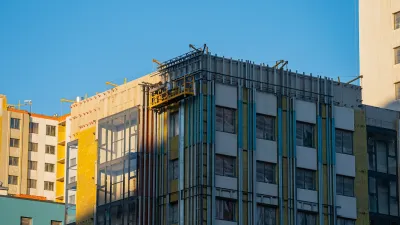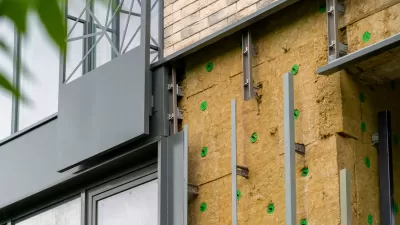As the current fascination with all things green grows with leaps and bounds, the question arises – are there any limits to what can be green?
As the current fascination with all things green grows with leaps and bounds, the question arises – are there any limits to what can be green?
In recent weeks I have seen articles in the Los Angeles Times magazine about how environmentalists are teaming with Wall Street investment banks to create green investment products and that a group of green leaning investors purchased the Texas-based utility TXU. Right down the street from my office is the world's first green parking structure. Can Wall Street, the belly of short-horizon, profit-based capitalism beast truly be developing an environmental consciousness? Can a hydrocarbon-based utility ever become green, no matter what commitments it makes to stop burning coal and reduce carbon emissions? Is greening a warehouse for one of the most egregious environmental villains– the personal automobile – an exercise in inspired design or futility?
Well, I think that for sustainability to have the possibility to effect the status quo in a meaningful way these types of turn-the-stereotype-on-its-head efforts are exactly what is needed. So I encourage us to find the green opportunity where nothing seems to exist, in the rooftop, sidewalk, alley, city yard, landfill, general plan, air quality management plan, economic development plan.
By looking beyond the self-imposed boundaries about what is green and what is not, we may be able to see the opportunities for synergy and integration that can make green an expectation rather than a newsworthy aberration.
(I had the chance to talk in some depth about these issues a couple of weeks ago on the KCRW program Design and Architecture.)

Planetizen Federal Action Tracker
A weekly monitor of how Trump’s orders and actions are impacting planners and planning in America.

Maui's Vacation Rental Debate Turns Ugly
Verbal attacks, misinformation campaigns and fistfights plague a high-stakes debate to convert thousands of vacation rentals into long-term housing.

Restaurant Patios Were a Pandemic Win — Why Were They so Hard to Keep?
Social distancing requirements and changes in travel patterns prompted cities to pilot new uses for street and sidewalk space. Then it got complicated.

In California Battle of Housing vs. Environment, Housing Just Won
A new state law significantly limits the power of CEQA, an environmental review law that served as a powerful tool for blocking new development.

Boulder Eliminates Parking Minimums Citywide
Officials estimate the cost of building a single underground parking space at up to $100,000.

Orange County, Florida Adopts Largest US “Sprawl Repair” Code
The ‘Orange Code’ seeks to rectify decades of sprawl-inducing, car-oriented development.
Urban Design for Planners 1: Software Tools
This six-course series explores essential urban design concepts using open source software and equips planners with the tools they need to participate fully in the urban design process.
Planning for Universal Design
Learn the tools for implementing Universal Design in planning regulations.
Heyer Gruel & Associates PA
JM Goldson LLC
Custer County Colorado
City of Camden Redevelopment Agency
City of Astoria
Transportation Research & Education Center (TREC) at Portland State University
Jefferson Parish Government
Camden Redevelopment Agency
City of Claremont






























